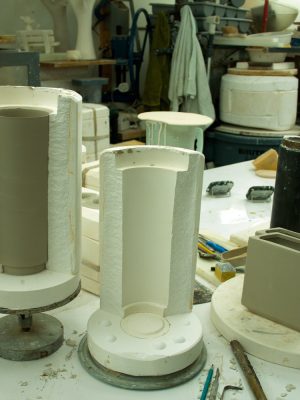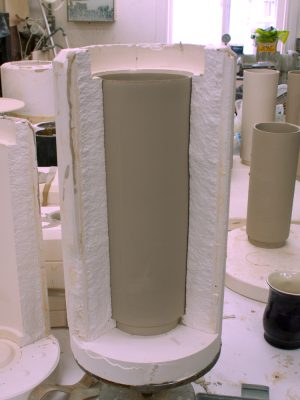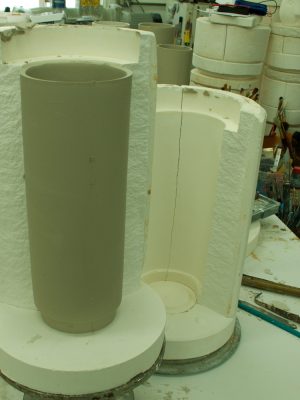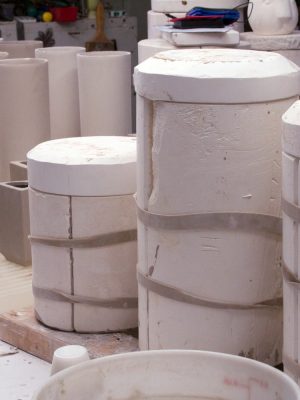When the Christmas blizzard struck, I was thankful to have a bag and a half of plaster put away. I used it to make three new vase moulds.
It was not important that these vases be original in form. I needed to generate larger forms to test glazes on as quickly as possible. I could get there the fastest by using found objects. I adapted a couple plastic cylinders by adding a raised foot in wax. I made moulds of them as well as one ready made.
Each mould was competed in two pours of plaster. I have been refining my technique on when best to split the walls. I incise the knife lines in the first few minutes after pouring while the plaster is still soft. Then I let it firm, do the prep and pour the bottom. I split the walls when the bottom releases. Each of these moulds took about one and half hours to complete from the time the plaster began slaking to the finished product. The blink of an eye in terms of conventional mould making.
These are slip casting moulds. I have enough work to press with the additional copies from the cat mask bowls still pending.
I stirred the problem batch of slip up again and found that it had improved with time. The layer of foam was gone. A slightly rotten smell remained. The stirred slip webbed between the fingers as it should.
The fired test of the particle contamination revealed it to be coarse sand. I have been removing this sand with a sieve as I pour the moulds.
I dried the moulds over a few days in front of a fan. I cast as many copies as the moulds would allow over the weekend. A damp mould gives a poor copy so it must be dried between.
I looked through my stock of moulds and found the ones for the tile vases I made a few years ago. They will make excellent glaze tests as well.
These casts should all be out of the bisque by the end of the week. Then back to glazing.






